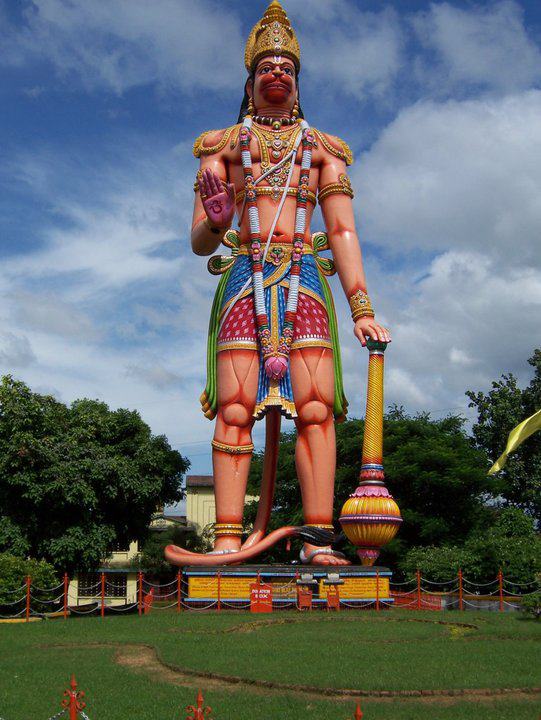
From the book “Myths,Legends, Concepts and Literary Antiquities of India” by Shri Manoj Das
How do the Indians worship Hanuman, a monkey, as a god?
Indian mysticism believes in the descent of the Divine Consciousness into human forms and, as Avatars, leading and enlightening humanity. The same logic of the faith supports a Divine Consciousness assuming an infra-human form for a certain purpose.
In fact, one of the several lines of Vishnu’s Avatarhood, well-known as the Dashavatar (Ten Incarnations) includes the forms of Fish, Tortoise and Boar. The epics and the Puranas often hide a subtle truth in their narration of stories, anecdotes, and characters. Hanuman does not belong to the species of monkeys. He was born of Lord Shiva’s power carried by the god of Air and his mother was a nymph.
He tried to swallow the rising sun soon after his birth and later accepted the sun as his teacher and followed him from horizon to horizon, in the process receiving lessons from the luminous god.
This is significant because the sun is the symbol of wisdom.
Thus, a Jnanayogi, – a Yogi following the path of knowledge – Hanuman became the greatest devotee of Rama and what is more, became his chief lieutenant in the most memorable physical action in his life, rescuing Sita from the fort of the titan-king Ravana of Lanka.
In other words, Hanuman the Jnanayogi was also a Karmayogi, the Yogi through his action offered to and inspired by the Divine. And, of course he was a Bhakta par excellence, an ideal Bhaktiyogi. His character was remarkable for its humility.
Hanuman was the leader of the Vanaras. Although later Indian literature and art depicted them as monkeys, they were probably a race, now extinct, only resembling the monkeys in certain physical characteristics.
Rama set several examples in social relationship – relationship between father and son, between brothers, between husband and wife, and the King and his subjects.
The example he set at the spiritual plane is that of the relationship between the Master and his disciples. As the scion of the Ikshakus, the dynasty to which all the ruling clans of the land owed allegiance, he could have summoned the best of battalions commanded by different rulers and marched upon Lanka. Instead, he allowed the Vanaras, hordes of imperfect creatures under Hanuman’s captainship, to fight for him against the perfect experts in warfare, the strong and the ruthless demons. The message is, when the Divine leads, what matters is the sincerity of the followers and not their individual merit.
Like several of the Avatars and Vibhutis, Hanuman was not conscious of the great qualities lying dormant in him. It was Jumbavan (yet another great non-human devotee of Rama) who awakened in him the knowledge of himself.
That done, Hanuman discovered in himself a new confidence and great strength. But while he set the supreme example of dedication to his Lord, he never cared to glorify himself with its exhibition. He would not use even an iota of his power to serve his own interest.
Thus, Hanuman is worshipped for the unmatched ideals he represents. He is a supernatural being, a Brahmachari (dedicated to celibacy), whom fear never touched and it is believed that his consciousness would protect those against such weaknesses who turned to him with devotion.
